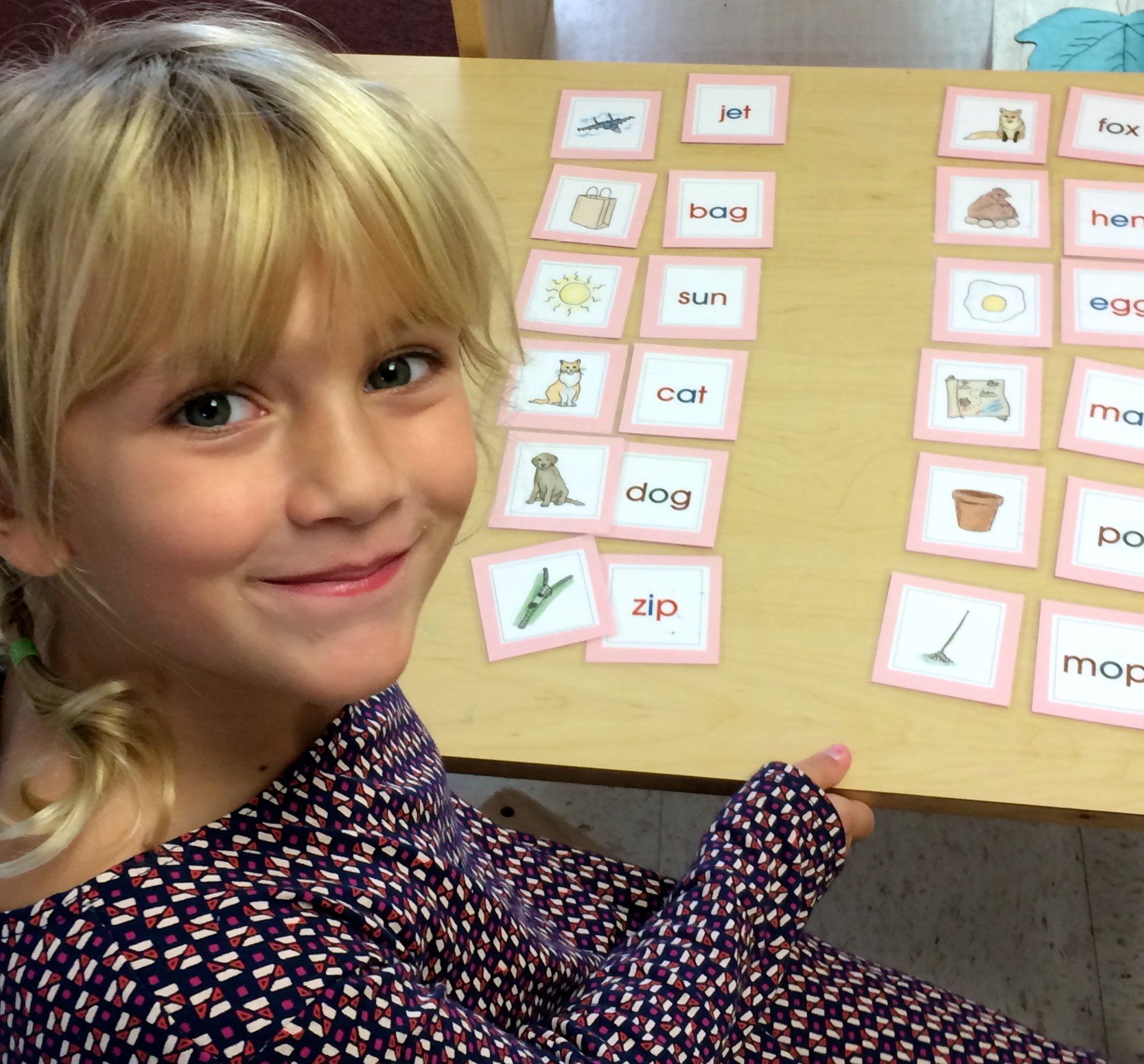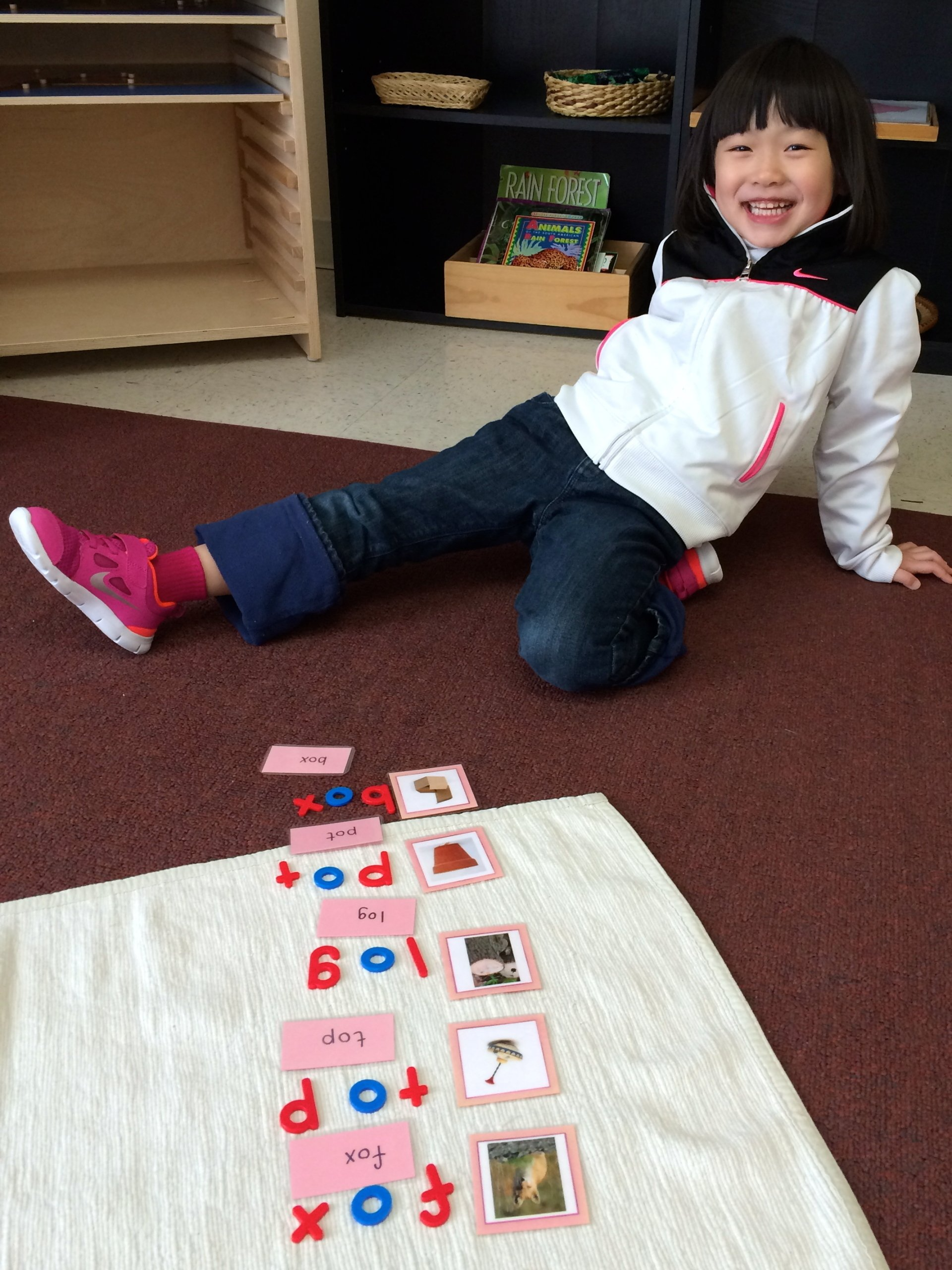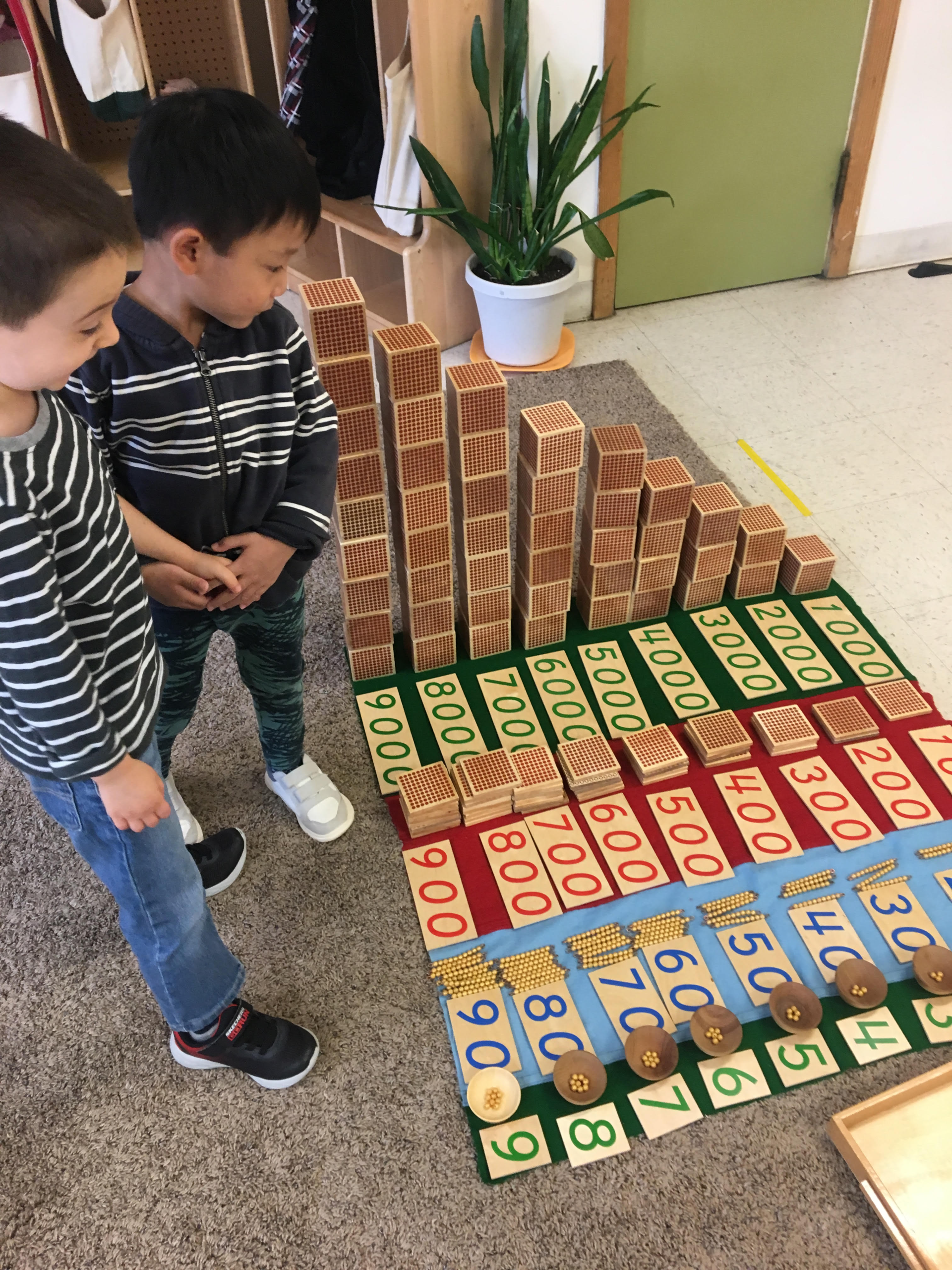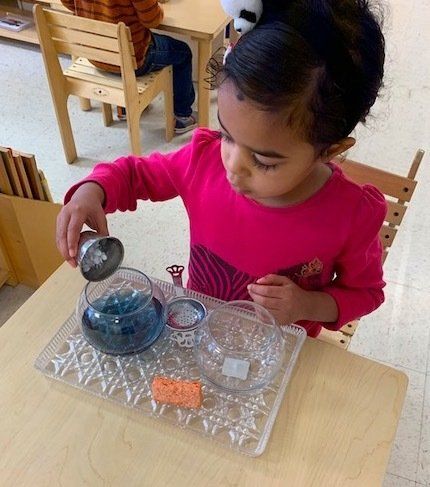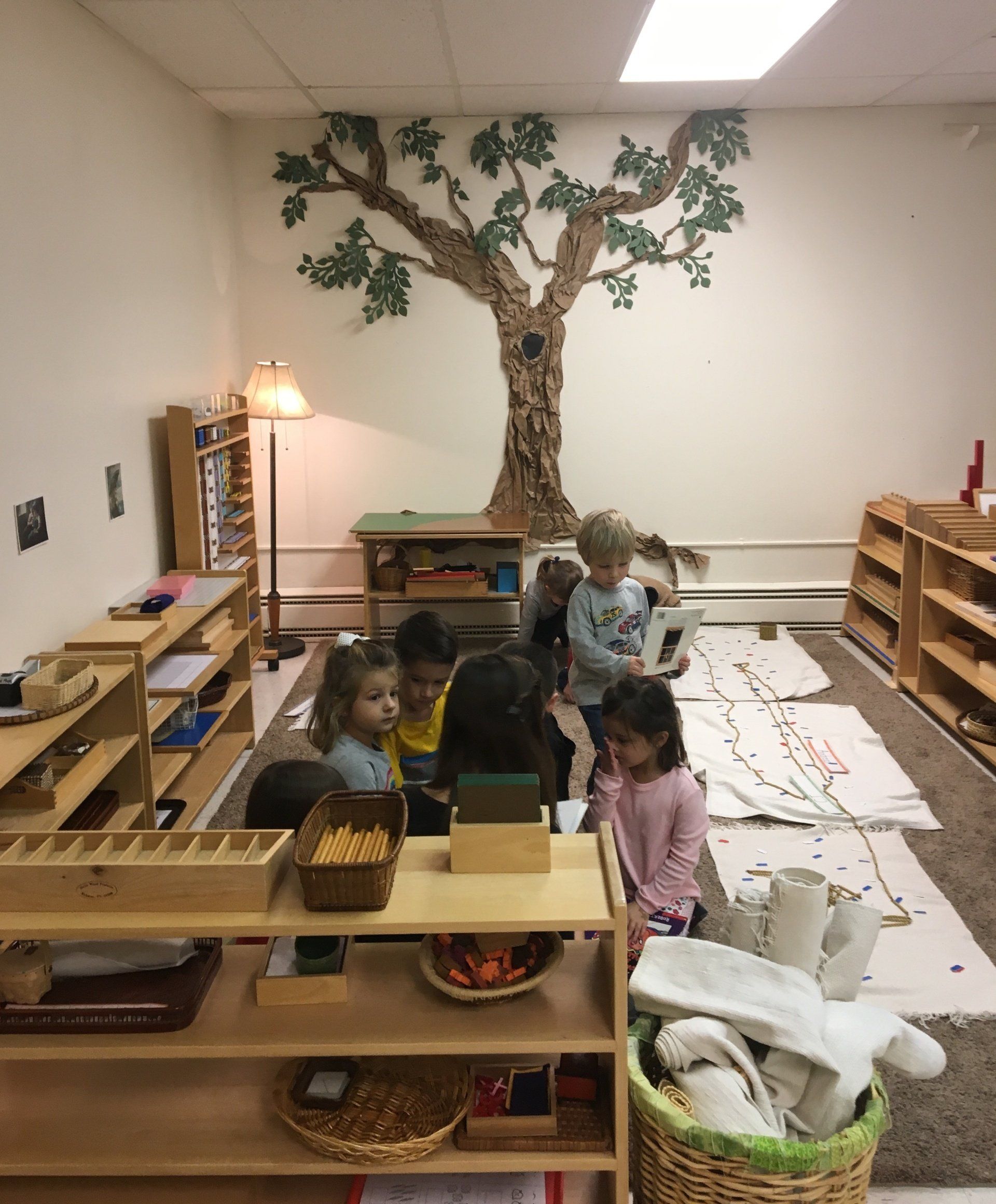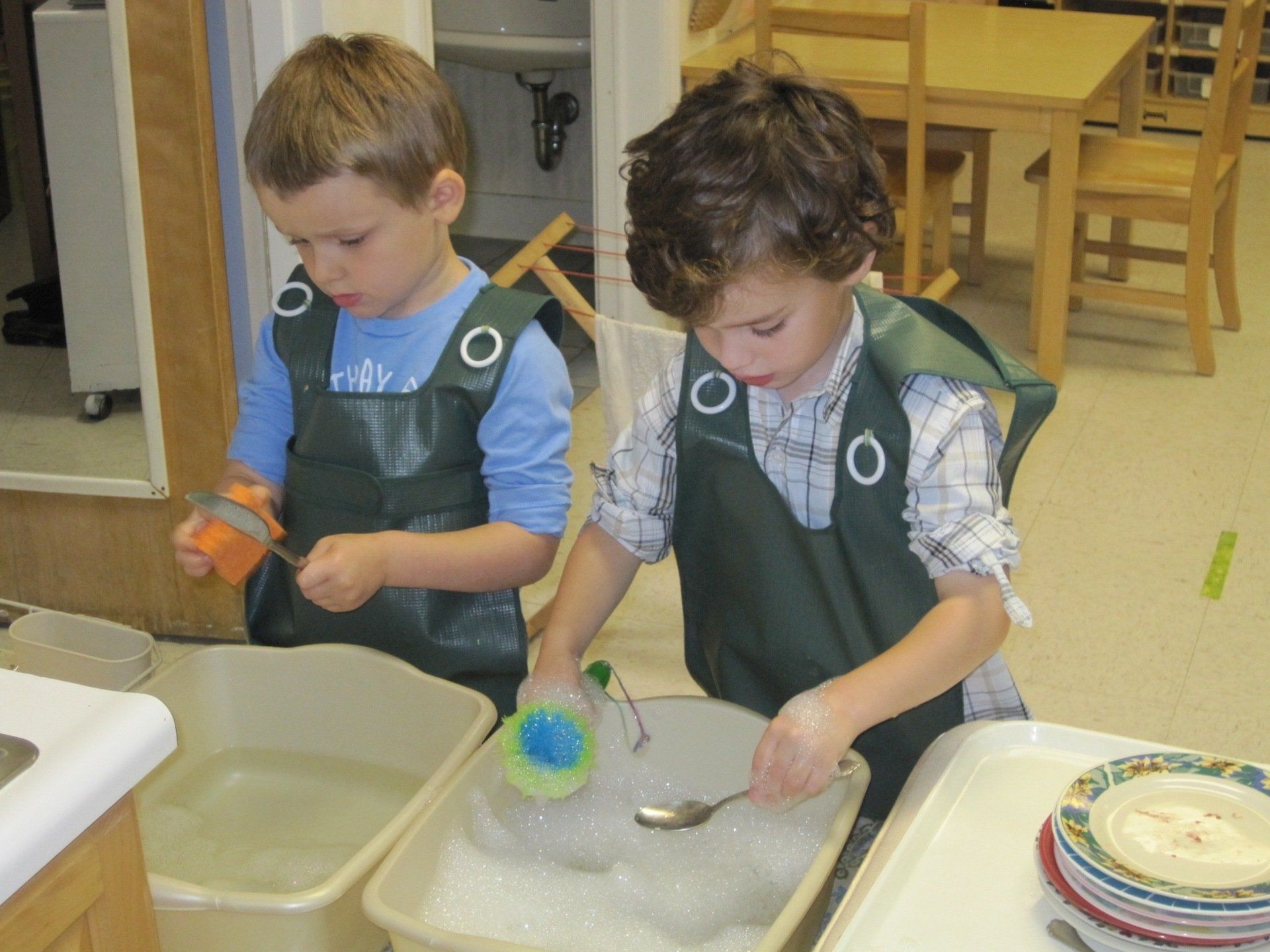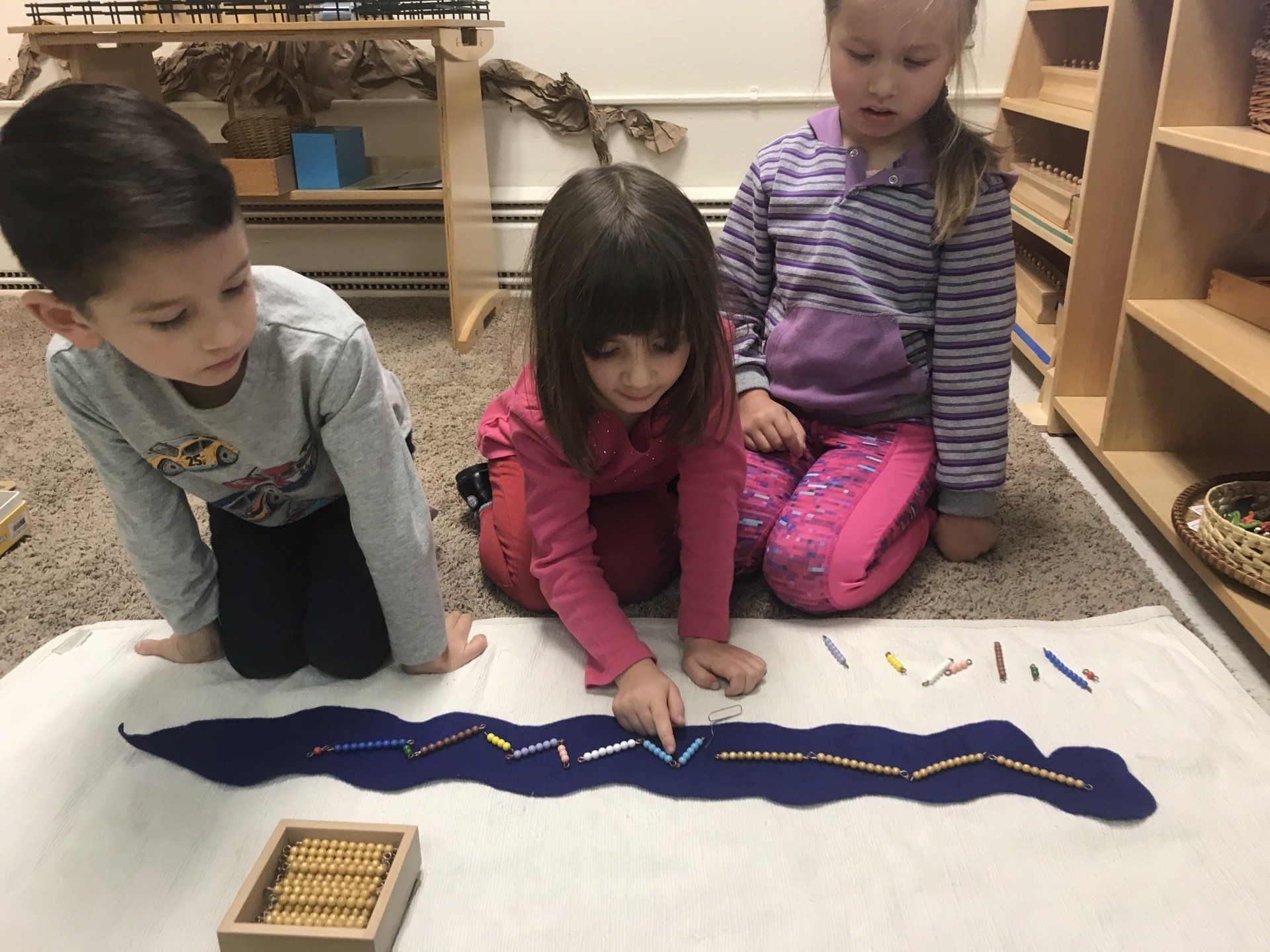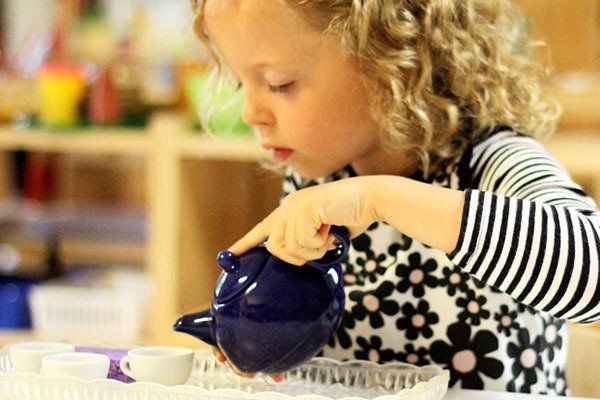Children's House
The Children’s House (also known as Primary) years, ages three to six, are a developmental period when children are particularly sensitive to taking in information. Our Children’s House program is a 3-year program (through the kindergarten year) based on these sensitive periods and planes of development. Dr. Maria Montessori observed that children in this stage of life appear to “absorb” information nearly effortlessly from the environment surrounding them.New Paragraph
Language Development
Mathematics
Practical Life
Sensorial
Cultural Studies
Mixed-Age Classrooms
A deep respect for each child characterizes our 3- to 6-year-old Children’s House (Primary) program. These mixed-age classes include 3 year olds, 4 year olds, and 5 year olds at the start of the school year. Each child progresses at a pace that is individually appropriate in each curriculum area, allowing each student to feel successful and challenged at all times. Although a much more time and energy-intensive approach to education, the Children’s House classrooms at Our World Montessori allow every child to achieve his/her highest potential. Our program fosters independence, concentration, and coordination; grace and courtesy; and the child’s natural sense of wonder and love of learning.


